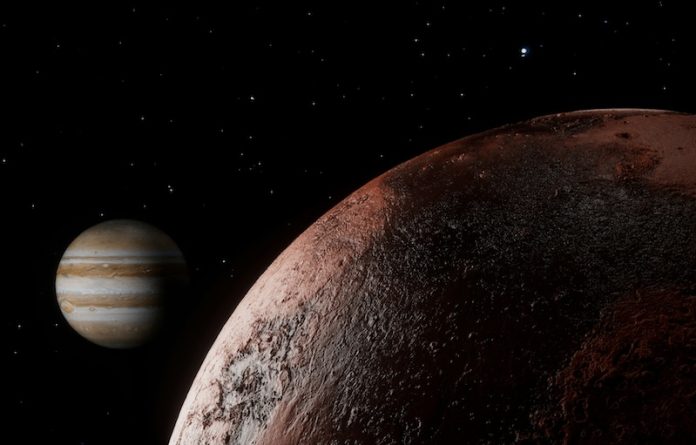
Astronomers have recently announced the discovery of a new exoplanet, closely resembling Jupiter in both size and mass, orbiting a distant star.
Named TOI-4862 b (also known as NGTS-30 b), this significant find adds to our growing list of known exoplanets, showcasing the vast diversity of planets beyond our solar system. The details of this discovery were shared on the pre-print server arXiv on April 3.
This exoplanet was identified by NASA’s Transiting Exoplanet Survey Satellite (TESS), which has been on a mission to catalog exoplanets by surveying the brightest stars near the sun since its launch in April 2018.
Out of over 7,100 potential exoplanets spotted by TESS, TOI-4862 b is among the 432 that have been confirmed.
The discovery team, led by Matthew Battley from the University of Geneva in Switzerland, spotted TOI-4862 b by observing a dip in the light from its host star, indicating a planet passing in front of the star. Follow-up observations further confirmed the planet’s existence and characteristics.
TOI-4862 b orbits a young G-type star, located about 762 light years from Earth, every 98.3 days. The planet’s orbit is moderately eccentric, leading to a significant variation in its temperature, ranging from 274 to 500 Kelvin.
This eccentric orbit suggests an interesting dynamic and thermal environment on the planet.
The host star, TOI-4862, is slightly smaller and less massive than our sun, with an estimated age of 1.1 billion years, making it relatively young.
This youth is reflected in the planet as well, marking TOI-4862 b as one of the youngest warm Jupiter-like planets discovered to date.
One intriguing aspect of TOI-4862 b is its composition. Based on the researchers’ analysis, the planet is enriched with heavy elements, boasting a heavy element mass fraction of 0.23. This composition is quite different from that of its host star, offering clues into the planet’s formation and evolution.
The discovery of TOI-4862 b is not just another addition to our catalog of exoplanets. It provides a unique opportunity to study the early stages of planetary evolution and migration.
The planet’s relatively young age, combined with its size, orbit, and composition, makes it a prime candidate for further study.
Researchers are particularly interested in examining the planet’s spin-orbit angle and atmosphere, which could offer insights into how it ended up in its current orbit and what its environment might be like.
In sum, the discovery of TOI-4862 b opens up new avenues for understanding the diversity and dynamics of planetary systems beyond our own.
It underscores the importance of ongoing space missions like TESS in uncovering the secrets of our universe and the potential for life beyond Earth.
The research findings can be found in arXiv.
Copyright © 2024 Knowridge Science Report. All rights reserved.



